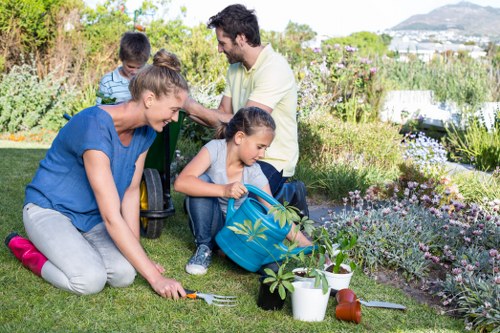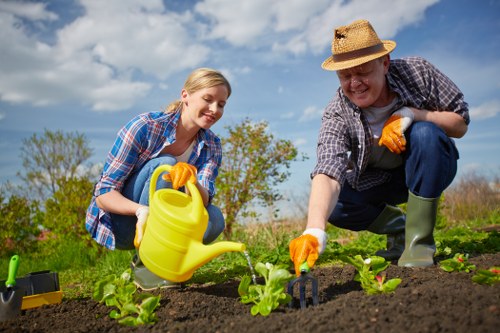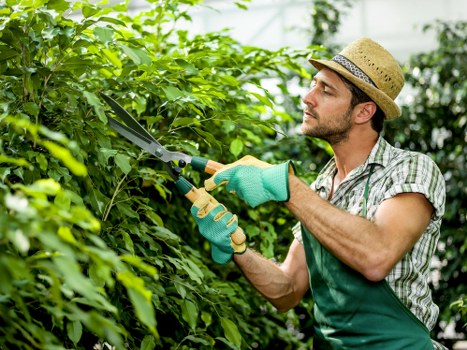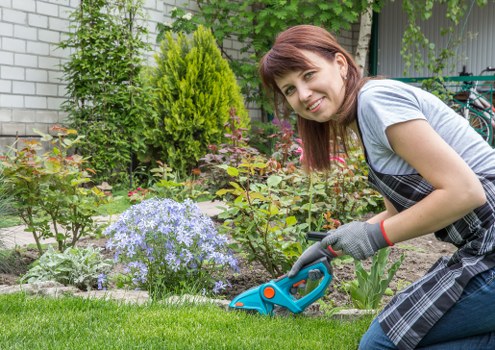Gardeners Dalston: Cultivating Urban Green Spaces in the Heart of the City
Introduction to Gardeners Dalston

The vibrant community of Gardeners Dalston has transformed an urban landscape into a thriving haven of green life. Nestled in one of London’s most dynamic neighborhoods, Dalston is a testament to how creative gardening can coexist with city living. Here, residents and local enthusiasts have embraced the challenge of cultivating beautiful, sustainable gardens that not only beautify the area but also provide a peaceful retreat from the hustle and bustle of urban life. The gardens serve as a living reminder that with a bit of passion and hard work, even small spaces can bloom into spectacular natural retreats. This environment of growth and renewal stands as a beacon for community-driven projects throughout London.
Gardeners Dalston is not only about the splendor of flowers and foliage; it is about fostering connections between people, nature, and the community. Local residents, professionals, and hobbyists alike come together to share gardening tips, swap plants, and exchange stories of success and surprise in their urban plots. Such unity is both rare and essential in today’s fast-paced life, where community spirit often takes a back seat to individual pursuits. Every plot of vegetables, every flowering bed, and every reclaimed green space contributes to a healthy ecosystem and vibrant community life in Dalston.
The transformation seen in Dalston's gardens reflects a broader movement towards sustainable urban living. Even in a concrete-dominated environment, the dream of a green oasis can become a reality through thoughtful design and community dedication. Residents have introduced innovative ideas for water conservation, organic composting, and local biodiversity enhancement. These efforts shine a light on the potential for urban areas to contribute to environmental sustainability. This article aims to explore the legacy, techniques, and community impact of Gardeners Dalston, providing insights and inspiration for those who wish to see their urban surroundings blossoming with life.
The Legacy and History of Gardeners Dalston

The history of Gardeners Dalston is steeped in tradition, creativity, and resilience. The idea of transforming derelict urban spaces into thriving green landscapes has been part of Dalston’s cultural fabric for decades. Over the years, local community groups have taken empty lots and abandoned sites and turned them into lush community gardens. These spaces have evolved from humble beginnings into well-organized environments that support both nature and community interaction. Through periodical workshops and public events, the legacy of these gardens has been cemented as a genuine commitment to ecological stewardship and urban beautification.
Historically, Dalston has seen an ebb and flow of social changes and economic challenges, yet its gardens have remained a symbol of hope and transformation. Early gardening enthusiasts in the area often worked with limited resources, demonstrating an admirable commitment to the environment, even in the face of urban adversity. Their spirit, combined with innovative techniques and a community-first attitude, laid the foundation for what Gardeners Dalston stands for today. By embracing both modern and traditional methods, these pioneers made it possible for new generations to continue the work of cultivating resilient urban oases.
In recent years, the impact of Gardeners Dalston has reached far beyond its original boundaries. The success of these urban gardens has inspired similar initiatives in other parts of London and even throughout the United Kingdom. Current projects highlight a blend of old-school horticulture with technology-driven innovations. For instance, some community gardens now leverage smart irrigation systems, green roofs, and vertical planting techniques, ensuring that sustainability remains at the forefront of their growth strategies. This blend of historic passion and modern innovation continues to define the character of Gardeners Dalston.
Community Impact and Green Initiatives

One of the most compelling aspects of Gardeners Dalston is its profound impact on the local community. The gardens have become communal sanctuaries that provide not only a place for growing produce but also a venue for social gatherings and cultural exchange. In this urban oasis, neighbors meet, share advice, and collaborate on initiatives that benefit both their immediate surroundings and the broader environment. This community engagement has led to improved well-being, stronger local networks, and a collective commitment to sustainability. The presence of these gardens often results in reduced stress levels and improved air quality, which are especially important in a bustling urban center.
The hands-on experiences provided by these outdoor spaces allow participants to learn about nature, sustainable practices, and self-sufficiency. Regular workshops, planting sessions, and seasonal events are organized to educate both young and old about organic gardening techniques, water conservation, and biodiversity preservation. Through such initiatives, Gardeners Dalston has inspired many to take a more active role in environmental conservation. Participants experience not just the beauty of nature, but also its essential benefits to mental and physical health.
Moreover, the gardens serve as practical examples of how urban areas can integrate green solutions seamlessly. Community-led projects have introduced innovative methods like rainwater harvesting, composting, and the use of native species, all of which contribute to ecosystem balance. These initiatives are often supported by local councils and non-profit organizations, creating a network that champions green urban living. The tangible benefits of these projects—such as increased urban biodiversity and enhanced community cohesion—are felt widely, reaffirming the vital role that green spaces play in city life.
Innovative Urban Gardening Techniques

The rise of urban farming in Dalston reflects an adventurous spirit among its resident gardeners, who embrace both tradition and modernity. In these spaces, you will find a mix of classic horticultural methods alongside innovative techniques adapted to urban constraints. Many gardens incorporate vertical gardens and container planting systems, which maximize small spaces and convert them into productive green areas. These methods allow urban gardeners to flourish even when space is at a premium, demonstrating that creativity is the cornerstone of successful urban gardening initiatives.
In addition to these innovative planting strategies, Dalston gardens are also known for their emphasis on sustainability and technology. Some gardens now feature smart watering systems controlled by mobile apps, which ensure that water is used efficiently and only when needed. Such technologically assisted methods enable gardeners to maintain healthy plants without the excessive use of resources. The use of reclaimed urban structures to create micro-gardens further underscores the creative potential available to communities determined to integrate nature into their daily lives. These advances foster a dynamic environment where learning and experimentation are highly valued.
Educational workshops featuring expert horticulturists, environmental scientists, and local garden enthusiasts are now a cornerstone of Dalston’s green culture. These sessions cover a wide range of topics—from soil health and pest management to organic fertilizers and pollinator-friendly planting. Under the guidance of seasoned professionals, novice gardeners can quickly grasp essential skills that empower them to maintain thriving green spaces. This environment of constant learning and innovation helps to forge a deep, lasting connection between residents and their local ecosystem, ensuring a future where sustainable urban gardening remains a vibrant, integral part of Dalston’s identity.
Local Relevance and Nearby Areas

Gardeners Dalston enjoys a unique position in London, as its initiatives have extended their positive influence beyond local boundaries. The gardens have become not only a symbol of local sustainability but also a hub that connects Dalston with its surrounding areas. Residents and visitors from nearby communities frequently tour these green spaces, finding inspiration in the creative use of otherwise neglected urban areas. The involvement of areas such as Hackney, Shoreditch, and Clapton demonstrates how the success of Dalston’s gardens has spurred interest in similar green projects throughout the borough.
Local influence is further underscored by the close proximity of other vibrant neighborhoods in the area. For instance, districts like Hackney Wick and Hoxton have seen a surge in community gardening, often drawing on the pioneering methods developed in Dalston. The collaboration between these areas enhances not just environmental outcomes, but also cultural exchange and social cohesion. Forums and collaborative events are common, where ideas and resources are shared across neighborly lines. This collective effort paves the way for a greener, more sustainable future in the heart of London.
In addition to these prominent areas, Gardeners Dalston benefits from connections with several other neighborhoods, creating a rich tapestry of local engagement. These include Islington, Bethnal Green, Camden Town, Stoke Newington, London Fields, Whitechapel, and Manor House. Each of these districts offers its own unique blend of history, culture, and green initiatives. For example, Islington provides a mix of traditional architecture and modern green projects, while Camden Town is renowned for its artistic flair and community resilience. Collectively, these regions form a network of naturally inclined, environmentally conscious communities committed to spreading the message of sustainability and urban greening throughout London.
Frequently Asked Questions
- What is Gardeners Dalston?
Gardeners Dalston is a community-driven initiative dedicated to transforming urban spaces into green, sustainable gardens. These gardens serve as places of relaxation, education, and community engagement in one of London’s most vibrant neighborhoods. - How did the gardening movement begin in Dalston?
The movement started with local community groups reclaiming derelict urban areas. Over time, their dedication and innovative approaches have turned these spaces into thriving gardens that now serve as models for urban sustainability across the UK. - What types of gardening techniques are used in Dalston?
Gardeners Dalston utilizes a mix of traditional horticultural methods and modern innovations. Techniques include container planting, vertical gardens, smart irrigation systems, and organic composting, all aimed at making the best use of limited urban spaces. - Are there educational opportunities for new gardeners?
Yes, numerous workshops and community events are regularly held in Dalston. These educational sessions cover topics such as soil management, water conservation, and eco-friendly pest control, ensuring that new gardeners can quickly learn and apply essential skills. - What nearby areas are connected to Gardeners Dalston?
The initiative influences and is influenced by several nearby areas, including Hackney, Shoreditch, Clapton, Hackney Wick, Hoxton, Islington, Bethnal Green, Camden Town, Stoke Newington, London Fields, Whitechapel, and Manor House, each of which contributes to the broader network of urban green spaces.